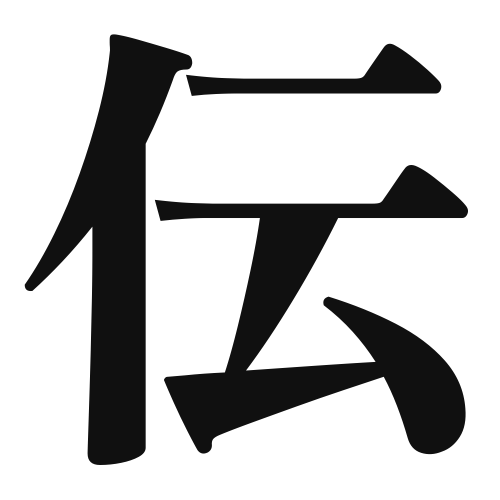1. Overview of Meaning
The kanji “伝” (den) primarily means “to transmit,” “to convey,” or “to communicate.” It is often used in contexts related to passing on information, culture, or traditions.
2. Formation and Radical
Formation of the Kanji: The kanji “伝” is a combination of the radical “亻” (which represents a person) and the character “伝” (which originally depicted a form of communication). It is classified as a compound character (会意文字), as it combines elements to convey a specific meaning.
Radical: The radical for “伝” is “亻,” which indicates that the character is related to human actions or interactions.
3. Examples of Usage
Common Words and Phrases: Some frequently used words that include “伝” are:
- 伝える (tsutaeru) – to convey, to tell
- 伝説 (densetsu) – legend
- 伝染 (densen) – infection
Example Sentences in Daily Conversation:
- 彼は私にそのニュースを伝えてくれました。
(He conveyed the news to me.) - この伝説は古くから語り継がれています。
(This legend has been passed down for generations.)
4. Synonyms and Antonyms
Similar Kanji: A similar kanji is “送” (sō), which means “to send.” While both involve communication, “送” emphasizes the act of sending something, whereas “伝” focuses on the act of conveying information.
Opposite Kanji: An antonym for “伝” could be “隠” (in), which means “to hide.” This represents the opposite action of conveying or transmitting information.
5. Cultural and Historical Background
Relation to Japanese Culture: The concept of “伝” is deeply rooted in Japanese culture, where the transmission of knowledge, traditions, and values is highly valued. It reflects the importance of communication in maintaining social harmony.
Proverbs and Idioms: One common saying is “伝えたいことは、言葉にすることが大切だ” (It is important to express what you want to convey in words), highlighting the significance of communication in relationships.
